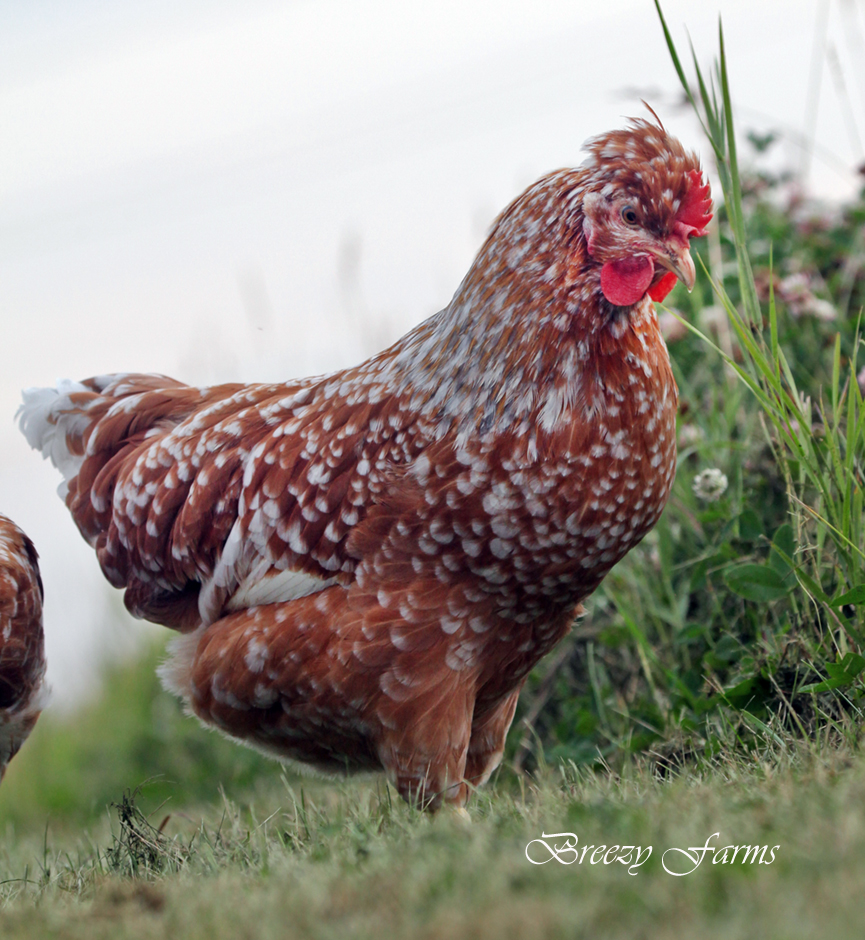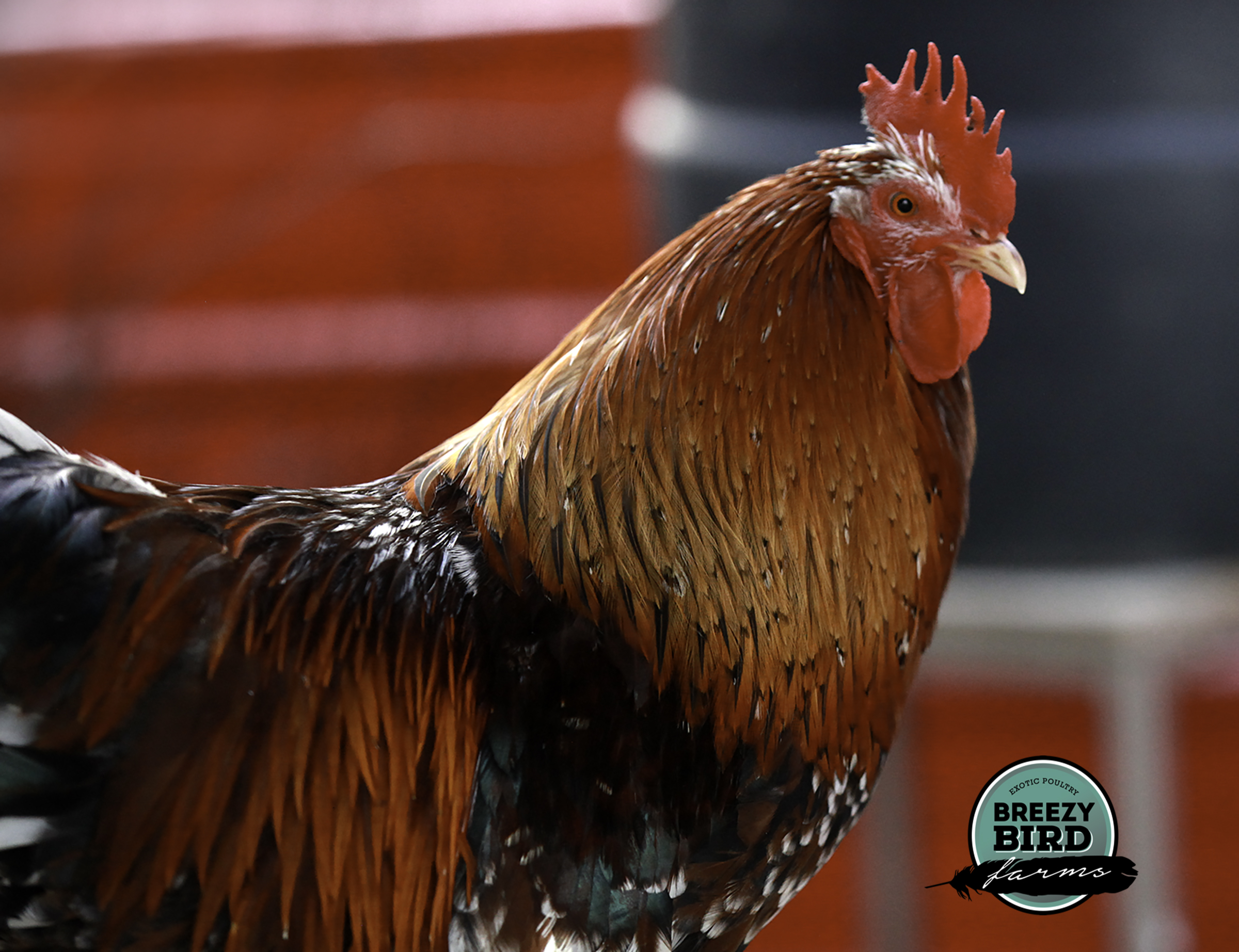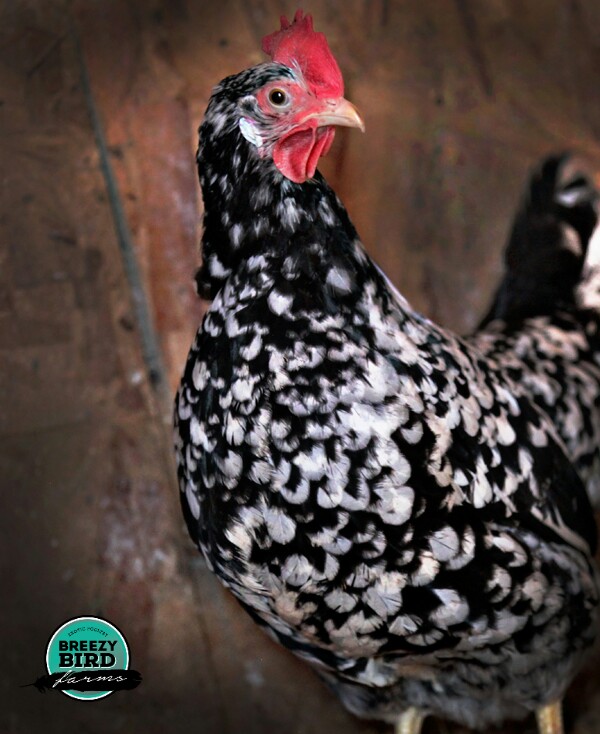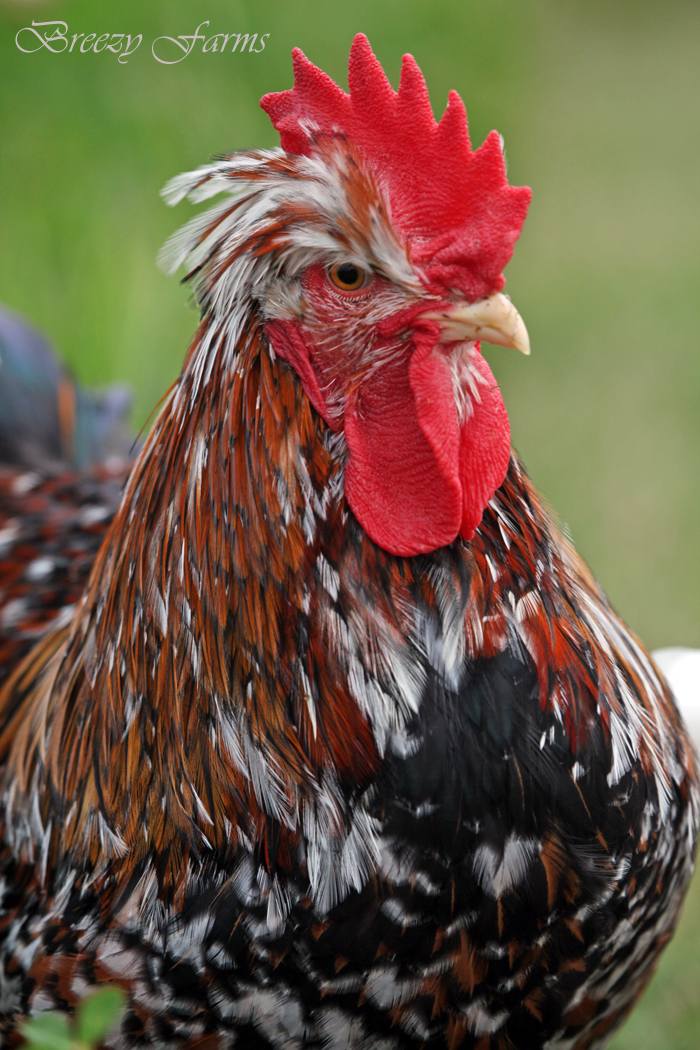Adding bloom to your backyard
The Swedish Flower Hen is a traditional breed that originated in Sweden, known for its vibrant colors and patterns. Developed from local landrace chickens, this breed has deep historical roots and was primarily raised by farmers for its dual-purpose capabilities in both meat and egg production. The Swedish Flower Hen is recognized for its adaptability and resilience to various climates, making it a valuable breed in rural Swedish life.
 The name "Swedish Flower Hen" refers to the breed as a whole, encompassing both males and females. The term "hen" is often used colloquially to describe them.
The name "Swedish Flower Hen" refers to the breed as a whole, encompassing both males and females. The term "hen" is often used colloquially to describe them.
Historically, these hens were kept on small farms, thriving in free-range environments that suited the pastoral lifestyle of the time. The breed faced near extinction in the mid-20th century due to industrial farming practices, but conservation efforts in recent decades have revived interest in the breed, emphasizing its importance in preserving traditional farming practices.
 Physical Characteristics
Physical CharacteristicsSize: Swedish Flower Hens are medium-sized birds. Hens typically weigh around 4 to 6 pounds (approximately 1.8 to 2.7 kg), while roosters weigh between 6 to 8 pounds (approximately 2.7 to 3.6 kg).
Feathering: They are known for their striking plumage, which features a mix of colors including . The feathers create unique patterns on each bird, resembling a blooming flower. Depending on the line, they may have crests. Breezy Bird Farms breeds both crested and non Crested Swedish Flower.
Comb and Wattles: Swedish Flower Hens have a single comb and bright red wattles, characteristic of many traditional breeds.
Egg Color: Swedish Flower Hens lay medium-sized eggs that range in color from light brown to cream.
Annual Production: On average, Swedish Flower hens can produce around 150 to 200 eggs per year, making them reliable layers for small-scale farms.
Egg Size: The eggs generally weigh between 50 to 60 grams (1.8 to 2.1 ounces), suitable for various culinary applications.

Swedish Flower Hens are known for their friendly and curious nature. They are generally easy to handle and adapt well to free-range environments. Their sociable disposition allows them to coexist harmoniously with other breeds, making them a great addition to family farms.
This breed is exceptionally hardy, having adapted to the varying climates of Sweden over centuries. They thrive in outdoor settings and their foraging ability makes them well-suited for sustainable farming practices.
 Breeding efforts for Swedish Flower Hens focus on maintaining their traditional characteristics, including their vibrant appearance and reliable egg production. Conservation programs have been established to promote the breed and ensure its sustainability for future generations.
Breeding efforts for Swedish Flower Hens focus on maintaining their traditional characteristics, including their vibrant appearance and reliable egg production. Conservation programs have been established to promote the breed and ensure its sustainability for future generations.
The Swedish Flower Hen is a cherished heritage breed known for its striking appearance, friendly temperament, and dual-purpose capabilities. Its historical significance and adaptability make it a valuable asset in preserving traditional farming practices. As interest in heritage breeds continues to grow, the Swedish Flower Hen remains a sought-after choice for poultry enthusiasts and sustainable farming advocates.